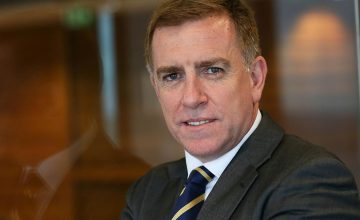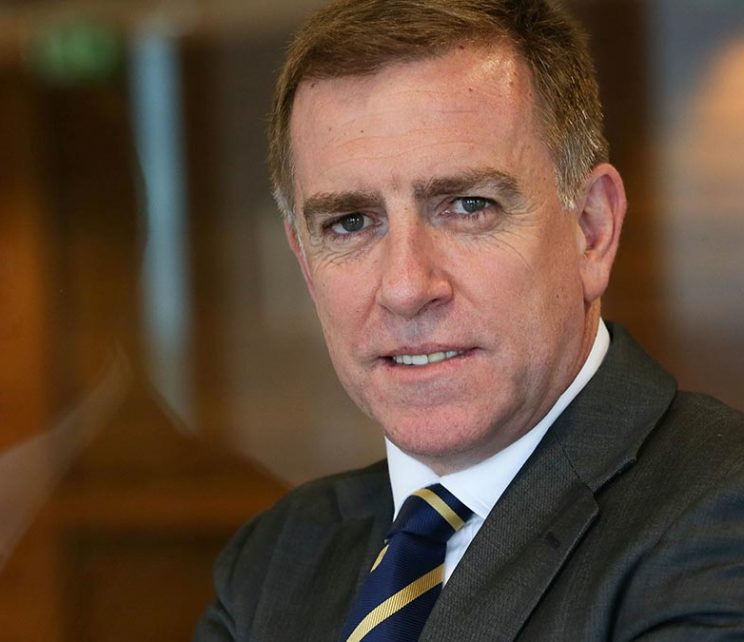
Mainstream Online Web Portal
LoginInvestors can view their accounts online via a secure web portal. After registering, you can access your account balances, periodical statements, tax statements, transaction histories and distribution statements / details.
Advisers will also have access to view their clients’ accounts online via the secure web portal.
The Point
Quick, actionable insights for investors
Income and Fixed Interest

An Aussie green bond that could fund a new national park while generating returns
Sustainable investors looking to fund nature repair often lack high-quality opportunities.
But a proposal to restore national parks in Victoria could be just the thing, says Regnan ESG and impact analyst Murray Ackman.
A proposed green bond offers the opportunity to unlock hundreds of millions in private capital to support the expansion of national parks in Victoria’s central highlands, including a “Great Forest National Park”.
The park is under consideration by the Victorian government as a possible use for public land previously allocated to timber harvesting in Gippsland and North-East Victoria.
No decision has yet been made. But advocates say the national park would attract 379,000 extra visitors and more than $40 million to the local economy every year.
A $224 million state government green bond is proposed to fund the forest’s restoration using private capital.
“From an investor perspective, everyone’s talking about nature repair and biodiversity but there are few investable opportunities,” says Murray.
“It’s exciting that world experts and academic leaders have come together to propose a viable, reliable way to invest in nature repair.”
Investor returns should be attractive, says Murray.
“We have noticed quality green, social and sustainability bonds have heightened demand in the secondary market and tend to outperform.”

Amy Xie Patrick: China’s silver bullet ahead of Golden Week?
Quick view
Amy Xie Patrick: China’s silver bullet ahead of Golden Week?

Income & Fixed Interest: Pendal’s quarterly insights on the themes driving Aussie markets
Quick view
Income & Fixed Interest: Pendal’s quarterly insights on the themes driving Aussie markets
In their latest quarterly report, the team discusses some of the biggest trends affecting Australian fixed income investors right now – click through.

Tim Hext: Inflation is easing, but the RBA isn’t celebrating yet
Quick view
Tim Hext: Inflation is easing, but the RBA isn’t celebrating yet
The latest GDP data shows a weak Australian economy, but the numbers should pick up from here, says Pendal’s head of government bonds, Tim Hext. Here are five takeaways.
1. Government spending remains strong despite government investment tapering off. “This remains a central factor behind strong employment and inflation – and the animated debate between Treasurer Chalmers and RBA Governor Bullock,” says Tim.
2. Households are going backwards again. “Tax cuts and subsidies could bring the consumer back in Q3, but early data from July suggests it may be a slow burn.”
3. Households are barely saving anything. This likely indicates incomes not keeping up with prices rather than exuberant consumer spending, says Tim.
4. Australia’s commodity boom is waning (a negative for GDP) but remains historically strong
5. GDP should pick up from here. The RBA is forecasting 1.7% GDP this year and 2.6% in 2024-25. Since the first two quarters are up 0.4%, the RBA is expecting 0.6% to 0.7% quarterly rises over the next year.
“That may seem a bit optimistic, but the possibility of rate cuts and falling inflation could well see a decent rebound in the economy.”
Read Pendal’s latest fixed-income report

Tim Hext: What the US rate cut means for investors – and what’s next
Quick view
Tim Hext: What the US rate cut means for investors – and what’s next
Now that the US rate-cutting cycle has begun, the Federal Reserve has shifted its focus from inflation to employment, according to Tim Hext – Pendal’s head of government bond strategies.
The Fed’s 50 basis point cut, its first since 2020, brings rates down to 5%.
Instead of supporting markets, the cut pushed both bonds and equities in the opposite direction – with yields rising by about 5 basis points and equity markets falling around 0.5%.
This reaction, Tim explains, is more about market expectations versus the Fed’s own projections.
“The impact of hosing down expectations outweighed the larger actual cut,” he says.
The Fed’s rate projections show that the market is still ahead of the Fed, particularly in the near term.
With two meetings between now and the end of the year, Tim adds that employment data will be key to the Fed’s decision-making.
“The Fed is now more focused on employment than inflation, so payroll data will be front and centre,” he says.
He explains more in his latest article

Tim Hext: In bonds, the trend is your friend
Quick view
Tim Hext: In bonds, the trend is your friend
There’s been a few false starts when it comes to the turning point for the current economic cycle, but now it’s the real deal, says Pendal’s head of government bonds, Tim Hext.
“It is very difficult to pick the very top or very bottom in yields. What is easier is to look at the trend. Are rates going up or are they going down?” Hext asks.
“When the central bank starts hiking or cutting benchmark rates, the bond market has already moved. But that doesn’t mean the moves in bond yields have gone as far as they are going to go. The changes in benchmark rates continue the trend. They don’t end it.”

Amy Xie Patrick: Five strategies to navigate late-cycle markets
Late-cycle dynamics can be tricky to navigate. Here are five tactics Pendal’s head of income strategies AMY XIE PATRICK is considering for the path ahead – read more

Tim Hext: Five key takeaways from the latest GDP data
Quick view
Tim Hext: Five key takeaways from the latest GDP data
The latest GDP data shows a weak Australian economy, but the numbers should pick up from here, says Pendal’s head of government bonds, Tim Hext. Here are five takeaways.
1. Government spending remains strong despite government investment tapering off. “This remains a central factor behind strong employment and inflation – and the animated debate between Treasurer Chalmers and RBA Governor Bullock,” says Tim.
2. Households are going backwards again. “Tax cuts and subsidies could bring the consumer back in Q3, but early data from July suggests it may be a slow burn.”
3. Households are barely saving anything. This likely indicates incomes not keeping up with prices rather than exuberant consumer spending, says Tim.
4. Australia’s commodity boom is waning (a negative for GDP) but remains historically strong
5. GDP should pick up from here. The RBA is forecasting 1.7% GDP this year and 2.6% in 2024-25. Since the first two quarters are up 0.4%, the RBA is expecting 0.6% to 0.7% quarterly rises over the next year.
“That may seem a bit optimistic, but the possibility of rate cuts and falling inflation could well see a decent rebound in the economy.”
Read Pendal’s latest fixed-income report

Tim Hext: RBA minutes – inside a meeting of two-handed economists
Quick view
Tim Hext: RBA minutes – inside a meeting of two-handed economists
Despite a narrative around re-emerging inflation, Australian investors are remarkably relaxed about the outlook for prices, observes Pendal’s head of government bond strategies, Tim Hext.
April’s inflation numbers – released yesterday – show a 3.6% increase in the annual Consumer Price Index. That’s slightly higher than March (3.5%) and more than the 3.4% markets were hoping for.
A rise in goods prices – mainly furniture, footwear and clothing – will not go unnoticed by the Reserve Bank and will require further investigation, says Tim.
But overall, the market is backing the RBA to do its job, he says. Implied 10-year inflation levels remain reasonably well anchored at 2.77%.
“Three-year yields in Australia moved back above 4 per cent after the data. We view this as a buying opportunity, since our medium-term view on inflation is positive.
“US inflation numbers come out on Friday and should show lower rental data feeding through to lower outcomes.
“Unless our concerns ramp up, we will be happy to be long duration into the winter months.”

Prevailing view or misconception? Pendal’s Amy Xie Patrick busts a few modern investing myths
Quick view
Prevailing view or misconception? Pendal’s Amy Xie Patrick busts a few modern investing myths
The past few years have played havoc with conventional market assumptions.
Inverted yield curves don’t mean recessions are imminent. Expensive valuations can get more expensive. An aggressive hiking cycle need not bring about recession. Bonds don’t have to go up when equities go down.
These things can cause head-scratching among modern-day investors.
“But viewed through a longer-term lens – think multiple cycles and regimes – these events become clearer,” says Pendal’s head of income strategies Amy Xie Patrick.
In this article, Amy explains what’s really going on with these “broken relationships”.
For example, an inverted yield curve – when short-term interest rates are higher than long-term ones – is often viewed as a sign of a looming recession.
But history shows the lag between the curve inversion and recession is highly variable – three months to two years.
“It simply indicates the market expects interest rate cuts at some point down the line, and that current policy settings are restrictive and will be normalised – for whatever reason – in the future.”

Amy Xie Patrick: No more sugar hits for China
Quick view
Amy Xie Patrick: No more sugar hits for China

Amy Xie Patrick: A fixed-income perspective on current market volatility
Quick view
Amy Xie Patrick: A fixed-income perspective on current market volatility
Big market moves have rocked sentiment since the beginning of August.
What’s the outlook for a US recession and potential rate cuts?
US markets expect a 50-basis-point cut in September, followed by consecutive 25-point cuts, says Pendal’s head of income strategies, Amy Xie Patrick.
“Some big-bank economists are calling for back-to-back 50-point cuts – even an inter-meeting emergency cut.” Are things really that dire?
“We argue the data isn’t there yet,” says Amy.
Either way, we’re in “the ripe part of the cycle” for owning at least some bonds in portfolios, she says.
“Without a recession, bond yields should continue to fall steadily as central banks normalise their policy settings from restrictive levels. With a recession, bonds will pay for themselves.”
Bonds provide great insurance for the unpredictable. Add to that the 4% types of annual income returns you can get on US or Australian 10-year bonds and it basically amounts to being paid to take out insurance.
Loading posts...
Loading posts...














